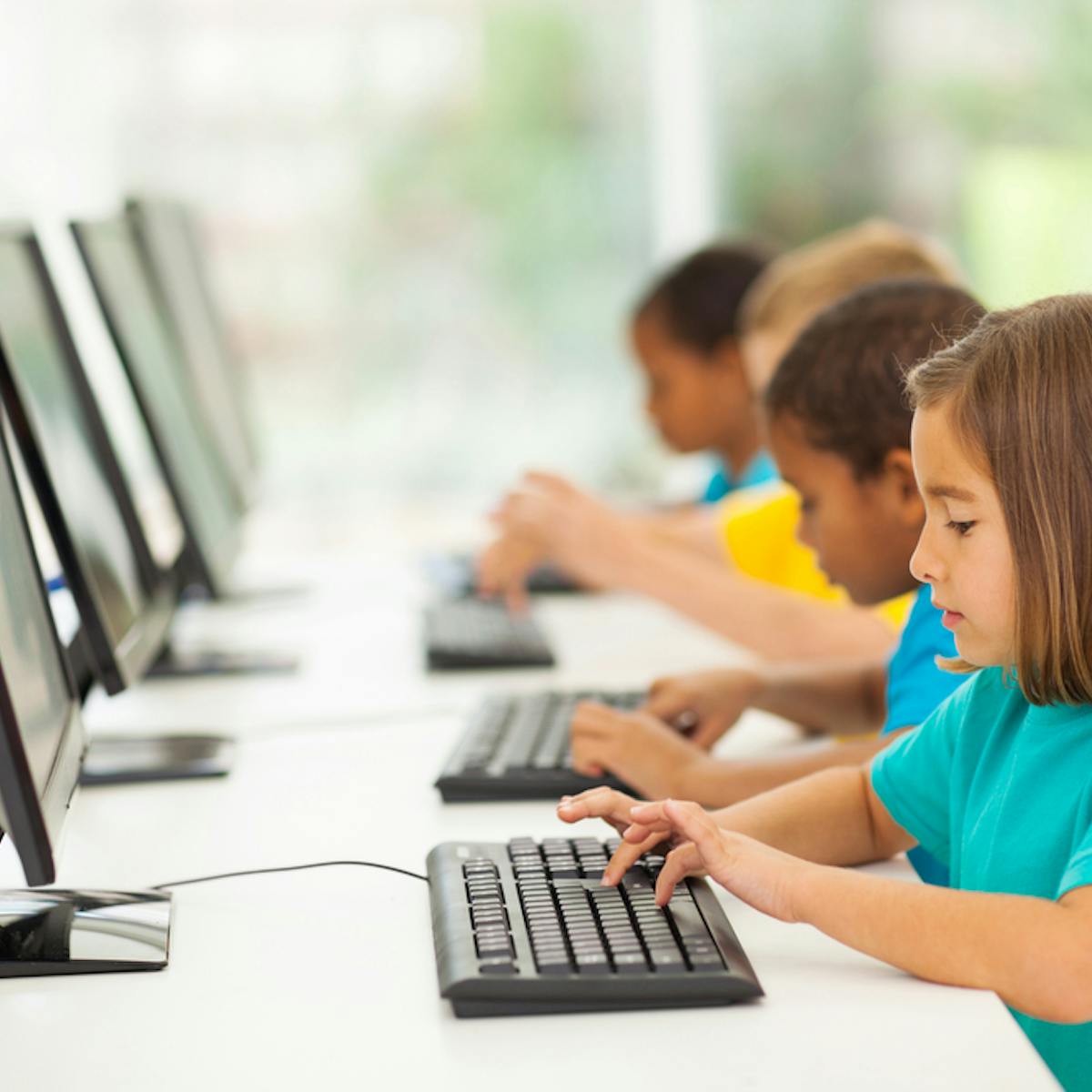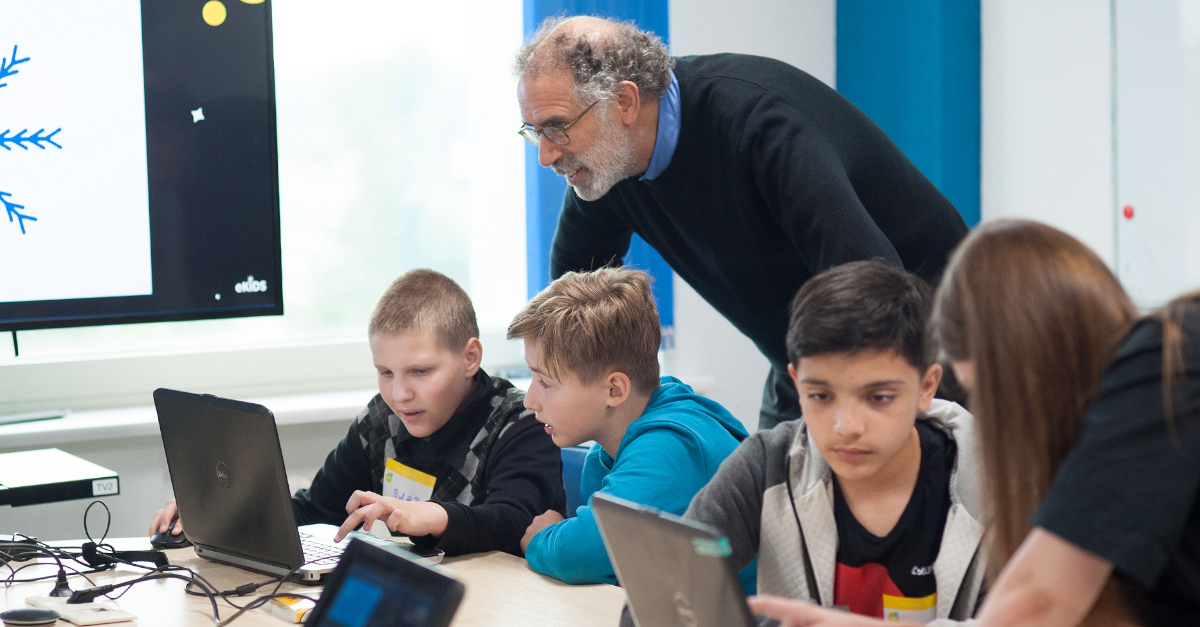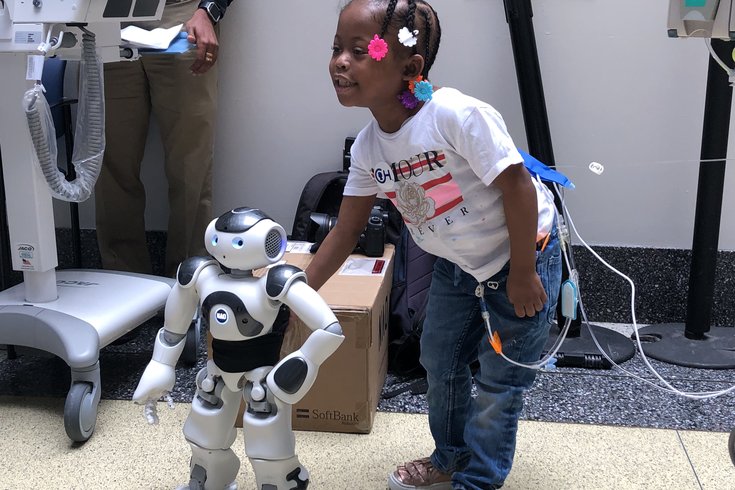Virtual Reality In Education
Slowly but surely, virtual reality and augmented reality are making their way into the mainstream. While both (known along with mixed reality as “reality technologies”) have been around for a couple of decades, they were until relatively recently reserved to a small group of aficionados. Technological advancements, interest from some of the biggest tech companies around and the realization that VR can help us out in many aspects of our day-day-lives now mean that more and more people are taking an interest. Today, VR in education is being used widely.

- 0 Comments
- Oct 9, 2019 10:00:00 AM
- Posted by Natalia Galvis
- Topics: EdTech, STEM, Realidad Virtual, STEMchat, AR, Edchat, Augmented Reality
7 Creative Ways to Fund Classroom Technology
Including technology in your classroom is an important way to help students learn and grow. However, sometimes the budget constraints of your district or school may hinder progress. It’s important to know that there are ways to support technological growth at your school, without dipping into your savings. Here are a few creative ways to raise funds for classroom tech.

- 0 Comments
- Oct 8, 2019 10:00:00 AM
- Posted by Natalia Galvis
- Topics: EdTech, STEM, Technology, STEMchat, Edchat, Digital Technology
Why VR is so effective for learning
Imagine taking a class about the solar system, but instead of reading a textbook section about gravitational pull you’re soaring around the rings of Saturn. Or maybe you’re a surgical resident and rather than watch a video about how to do a face transplant you actually perform one.
Virtual reality (VR) presentations have proven to be more than just novel visual aids for education. They’re powerful learning tools. Research shows that retention rates rise when students or job trainees use virtual reality to immerse themselves in a lesson or scenario.

- 0 Comments
- Oct 7, 2019 10:10:00 AM
- Posted by Natalia Galvis
- Topics: EdTech, STEM, VR, Realidad Virtual, STEMchat, Edchat
12 Questions That Parents Have About EdTech
Transitioning into any sort of technology-based curriculum can trigger concern in parents for a number of reasons. Change is frightening, and watching your own children experience the world much differently than previous generations – through the lens of a smartphone camera and behind the screens of portable tablets – can be unnerving.
- 0 Comments
- Oct 4, 2019 10:00:00 AM
- Posted by Natalia Galvis
- Topics: EdTech, STEM, STEMchat, Edchat
Students Who Engineer Their Way to Success
Engineering teaches critical thinking skills. These skills are in high demand not only in engineering, but also in other professions. The thinking skills of engineers include establishing replicable processes for presenting ideas, the ability to collect and analyze data, and the confidence in presenting solutions to problems.
Those skills aren’t just for engineers,. Everyone needs the critical thinking skills of engineers. These four high schools understand the implications for teaching engineering skills to all their students.

- 0 Comments
- Oct 3, 2019 10:00:00 AM
- Posted by Natalia Galvis
- Topics: Robotics, EdTech, STEM, Robots,, Engineering, STEMchat, Edchat
3 strategies to keep students engaged in STEM
STEM (science, technology, engineering, and math) is more than just an acronym or a collection of letters. Rather, it is an instructional movement that embodies cross-curricular concepts from four fundamental disciplines, as well as a research-based strategy that addresses the future needs of a technology-driven work force and sustaining a global economy. The importance of STEM is further validated by its prominence in the Next Generation Science Standards (NGSS).
:max_bytes(150000):strip_icc()/GettyImages-705002115Smaller-59a917ba396e5a001037e595.jpg)
One of the most effective instructional approaches toward the implementation of STEM in grade-level courses is through project-based learning (PBL). In this approach, instruction occurs through student-centered investigations focused on a specific topic driven by a set of objectives, culminating in a broadly-defined product or technique. Projects foster an environment of discussion, creativity, problem-solving, inquiry, modeling, and testing, and are applicable to students in all grade levels and subjects, but particularly within the STEM arena.
- 0 Comments
- Oct 2, 2019 10:00:00 AM
How EdTech Will Change School Culture
For more than 100 years, we’ve relied on the factory model for providing education. Born of the industrial age, when efficient systems mattered most in producing a product, the factory model mimicked assembly-line work.
Schools built large classrooms and filled them with multiple rows of students. Teachers delivered one-size-fits-all instruction, and process was replicated in room after room, hall after hall, and school after school.
Naming the education system after industrialism was more of a metaphor than anything else, but one thing became apparent. Industrialism had served its purpose. Continuing to model an education system after an era that had passed was hurting instruction, not helping it. In education, we deal with people, not parts.

- 0 Comments
- Oct 1, 2019 10:51:51 AM
CHOP's new robot sings, dances and even recognizes patients' faces
Philadelphia hospital debuts new robot designed to engage, educate young patients
 JOHN KOPP/PHILLYVOICE Saaliha, a 7-year-old patient at the Children's Hospital of Philadelphia, greets NAO, the hospital's new interactive robot.
JOHN KOPP/PHILLYVOICE Saaliha, a 7-year-old patient at the Children's Hospital of Philadelphia, greets NAO, the hospital's new interactive robot.
- 0 Comments
- Oct 1, 2019 10:49:19 AM
6 Ways We Kill Students’ Motivation
“What can we do to motivate our students who need it the most?” my principal recently asked.
As a teacher, I, of course, had many thoughts. But those thoughts are just that: mine. So I asked my principal a simple question: Why don’t we ask the students?
So we did.

- 0 Comments
- Sep 30, 2019 10:00:00 AM
A Better Way to Integrate Edtech
Helping reluctant teachers bring education technology into their classrooms starts with respecting their perspective.

- 0 Comments
- Sep 27, 2019 10:00:00 AM
- Posted by Natalia Galvis
- Topics: EdTech, STEM, STEMchat, Edchat
Relevant Posts
Popular Posts
Subscribe to Email Updates
-
I Want To Learn MoreADDITIONAL INFORMATION



